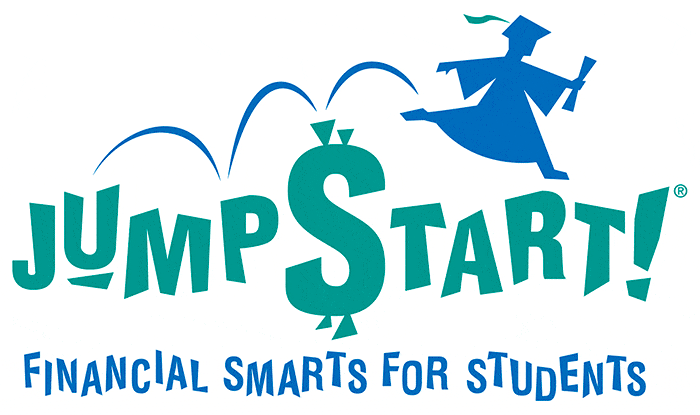| Earning Income |
|
|
|
|
|
|
| Compensation for a job or career can be in the form of wages, salaries, commissions, tips, or bonuses, and may also include contributions to employee benefits, such as health insurance, retirement savings plans, and education reimbursement programs. |
Lesson – Income and Compensation |
|
|
|
|
|
| In addition to wages and paid benefits, employees may also value intangible (noncash) benefits, such as good working conditions, flexible work hours, telecommuting privileges, and career advancement potential. |
Lesson – Income and Compensation |
|
|
|
|
|
| People vary in their opportunity and willingness to incur the present costs of additional training and education in exchange for future benefits, such as earning potential. |
Lesson – Income and Compensation
Lesson – Career Development |
|
|
|
|
|
| Employers generally pay higher wages or salaries to more educated, skilled, and productive workers than to less educated, skilled, and productive workers. |
Budget Game – Core Concept
Lesson – Labor and Productivity
Lesson – Income and Compensation
Lesson – Career Development |
|
|
|
|
|
| Changes in economic conditions, technology, or the labor market can cause changes in income, career opportunities, or employment status. |
Lesson – Labor and Productivity
Lesson – Unemployment
Lesson – The Business Cycle |
|
|
|
|
|
| Federal, state, and local taxes fund government-provided goods, services, and transfer payments to individuals. The major types of taxes are income taxes, payroll taxes, property taxes, and sales taxes. |
Budget Game – Core Concept
Budget Game – Understanding Your Paycheck
Lesson – Unemployment and other programs
Lesson – Taxation Overview |
|
|
|
|
|
| The type and amount of taxes people pay depend on their sources of income, amount of income, and amount and type of spending. |
Lesson – Taxation Overview
Lesson – Tax Filing and the 1040
Lesson – Sales Taxes
Interactive Lesson – Filing Your 1040 |
|
|
|
|
|
| Interest, dividends, and capital appreciation (gains) are examples of unearned income derived from financial investments. Capital gains are subject to different tax rates than earned income. |
Stock Game – Core Concept
Investing101 – Chapter 03. Making Your First Trade |
|
|
|
|
|
| Tax deductions and credits reduce income tax liability. |
Lesson – Common Tax Deductions |
|
|
|
|
|
| Retirement income typically comes from some combination of continued employment earnings, Social Security, employer sponsored retirement plans, and personal investments. |
Lesson – Preparing For Retirement
Activity – Saving To Be A Millionaire |
| |
|
|
|
| Owning a small business can be a person’s primary career or can supplement income from other sources. |
Lesson – What is Entrepreneurship?
Lesson – Starting a Business
|
|
|
|
|
|
| Spending |
|
|
|
|
|
|
| A budget helps people achieve their financial goals by allocating income to necessary and desired spending, saving, and philanthropy. |
Budget Game – Core Concept
Lesson – All About Budgeting
Lesson – Spending and Savings Plans |
|
|
|
|
|
| Consumer decisions are influenced by the price of products or services, the price of alternatives, the consumer’s budget and preferences, and potential impact on the environment, society, and economy. |
Lesson – Spending and Savings Plans
Lesson – Planning and Evaluating Business Advertising
Lesson – Personal Selling
|
|
|
|
|
|
| When purchasing a good that is expected to be used for a long time, consumers consider the product’s durability, maintenance costs, and various product features. |
Lesson – Spending and Savings Plans
Lesson – Planning Long Term Purchases
|
|
|
|
|
|
| Consumers may be influenced by how prices of goods and services are advertised, and whether prices are fixed or negotiable. |
Lesson – Pricing Strategies
Lesson – Planning and Evaluating Business Advertising
Lesson – Personal Selling |
|
|
|
|
|
| Consumers incur costs and realize benefits when searching for information related to the purchase of goods and services. |
Lesson – Researching Spending
Lesson – Planning Long Term Purchases |
|
|
|
|
|
| Housing decisions depend on individual preferences, circumstances, and costs, and can impact personal satisfaction and financial well-being. |
Budget Game – Core Concept
Activity – Use the Buy vs Lease Calculator
Lesson – Family Planning |
|
|
|
|
|
| People donate money, items, or time to charitable and nonprofit organizations because they value the services provided by the organization and/or gain satisfaction from giving. |
Budget Game – Core Concept
Lesson – Charitable Giving |
|
|
|
|
|
| Federal and state laws, regulations, and consumer protection agencies (e.g., Federal Trade Commission, Consumer Affairs office, and Consumer Financial Protection Bureau) can help individuals avoid unsafe products, unfair practices, and marketplace fraud. |
Lesson – Consumer Rights and Responsibilities |
|
|
|
|
|
| Having an organized system for keeping track of spending, saving, and investing makes it easier to make financial decisions. |
Lesson – What are Financial Records? |
|
|
|
|
|
| Saving |
|
|
|
|
|
|
| Financial institutions offer several types of savings accounts, including regular savings, money market accounts, and certificates of deposit (CDs), that differ in minimum deposits, rates, and deposit insurance coverage. |
Budget Game – Core Concept
Investing101 Course – Chapter 01. Introduction To Investing
Lesson – Banks, Credit Unions, and Savings & Loan Institutions |
|
|
|
|
|
| Deposit account interest rates and fees vary between financial institutions and depend on market conditions and competition. |
Investing101 Course – Chapter 01. Introduction To Investing
Lesson – Importance of Interest Rates |
|
|
|
|
|
| Unless offered by insured financial institutions, mobile payment accounts and cryptocurrency accounts are not federally insured and usually do not pay interest to depositors. |
Lesson – Banks, Credit Unions, and Savings & Loan Institutions
Lesson – What is Money? |
|
|
|
|
|
| Inflation can erode the value of savings if the interest rate earned on a savings account is less than the inflation rate. |
Lesson – Inflation
|
|
|
|
|
|
| Government agencies such as the Federal Reserve, the FDIC, and the NCUA, along with their counterparts in state government, supervise and regulate financial institutions to improve financial solvency, legal compliance, and consumer protection. | Lesson – Consumer Rights and Responsibilities | | | | | |
| Tax policies that allow people to save pretax earnings or to reduce or defer taxes on interest earned provide incentives for people to save. | Lesson – Preparing for Retirement
Lesson – Taxation Overview | | | | | |
| Employer defined contribution retirement plans and health savings accounts can provide incentives for employees to save. | Lesson – Health Insurance
Lesson – Preparing for Retirement | | | | | |
| People can reduce the potential for future financial strife with a partner or spouse by sharing personal financial information, goals, and values prior to combining finances. | Lesson – Family Planning | | | | | |
| There are many strategies that can help people manage psychological, emotional, and external obstacles to saving, including automated savings plans, employer matches, and avoiding personal triggers. |
Lesson – Automatic Payments
Lesson – Budgeting and Spending Strategies
Lesson – Spending and Savings Plans |
|
|
|
|
|
| Investing |
|
|
|
|
|
|
| A person’s investment risk tolerance depends on factors such as personality, financial resources, investment experiences, and life circumstances. |
Stock Game – Core Concept
Investing101 – Chapter 01. Introduction To Investing
Investing101 – Chapter 02. How the Stock Market Works and Why It Moves
Lesson – Investing Strategies |
|
|
|
|
|
| Investors earn investment returns from price changes and annual cash flows (such as interest, dividends or rent). The nominal annual rate of return is the annual total dollar benefit as a percentage of the beginning price. |
Stock Game – Core Concept
Investing101 – Chapter 05. Now That I Own It, What Should I Do?
Lesson – Why Invest In Stocks?
Lesson – Importance of Interest Rates |
|
|
|
|
|
| Investors expect to earn higher rates of return when they invest in riskier assets |
Stock Game – Core Concept
Investing101 – Chapter 04. Building Your $100,000 Portfolio
Lesson – How To Choose And Compare Stocks |
|
|
|
|
|
| Because inflation reduces purchasing power over time, the real return on a financial asset is lower than its nominal return |
Lesson – Importance Interest Rates
Lesson – Inflation |
|
|
|
|
|
| The prices of financial assets change in response to market conditions, interest rates, company performance, new information, and investor demand. |
Stock Game – Core Concept
Lesson – Understanding Price Movements
Investing101 – Chapter 05. Now That I Own It, What Do I Do? |
|
|
|
|
|
| When making diversification and asset allocation decisions, investors consider their risk tolerance, goals, and investing time horizon. |
Stock Game – Core Concept
Lesson – Building a Diversified Portfolio |
|
|
|
|
|
| Expenses of buying, selling, and holding financial assets decrease the rate of return from an investment. |
Stock Game – Core Concept
Investing101 – Chapter 05. Now That I Own It, What Do I Do? |
|
|
|
|
|
| Tax rules affect the rate of return on different investments, and can vary by holding period, type of income, and type of account. |
Lesson – Preparing For Retirement
Activity – Investment Return Calculator
Investing101 – Chapter 05. Now That I Own It, What Do I Do? |
|
|
|
|
|
| Common behavioral biases can result in investors making decisions that adversely affect their investment outcomes. |
Investing101 – Chapter 10. Investor’s Guide to Success |
|
|
|
|
|
| Financial technology can counterbalance negative behavioral factors when making investment decisions. |
Video – Order Types
Lesson – How To Choose And Compare Stocks
Investing101 – Chapter 10. Investor’s Guide To Success |
|
|
|
|
|
| Many investors buy and sell financial assets through discount brokerage firms that provide inexpensive investment services and advice using financial technology. |
Lesson – What Is A Brokerage?
|
|
|
|
|
|
| Federal regulation of financial markets is designed to ensure that investors have access to accurate information about potential investments and are protected from fraud. |
Investing101 – Chapter 06. Fundamental Analysis – Understanding Earnings and Cash Flow
Lesson – What Is A Balance Sheet
Lesson – Wht Is An Income Statement |
| |
|
|
|
| Investors often compare the performance of their investments against a benchmark, such as a diversified stock or bond index. |
Investing101 – Chapter 01. Introduction to Investing |
|
|
|
|
|
| Criteria for selecting financial professionals for investment advice include licensing, certifications, education, experience, and cost. |
Lesson – Certifications In The Finance Industry |
|
|
|
|
|
| Managing Credit |
|
|
|
|
|
|
| Borrowers can compare the cost of credit using the Annual Percentage Rate (APR) and other terms in the loan or credit card contract. |
Lesson – Using Credit
Activity – Car Loan Calculator
Lesson – Comparing Car Financing Options |
|
|
|
|
|
| Loans that are secured by collateral have lower interest rates than unsecured loans because they are less risky to lenders. |
Lesson – Using Credit
Lesson – Mortgages
Lesson – Credit Cards |
|
|
|
|
|
| Monthly mortgage payments vary depending on the amount borrowed, the repayment period, and the interest rate, which can be fixed or adjustable. |
Lesson – Mortgages
Activity – Buy vs Lease Calculator |
|
|
|
|
|
| Post-secondary education is often financed by students and families/caregivers through a combination of scholarships, grants, student loans, work-study, and savings. |
Lesson – Student Loans
Lesson – Career Development |
|
|
|
| |
| Federal student loans have lower rates and more favorable repayment terms than private student loans, and may be subsidized. |
Lesson – Student Loans |
|
|
|
|
|
| Down payments reduce the amount needed to borrow. |
Lesson – Using Credit
Lesson – Mortgages
Lesson – Comparing Car Financing Options
Activity – Car Loan Calculator |
|
| |
|
|
| Lenders assess creditworthiness of potential borrowers by consulting credit reports compiled by credit bureaus. |
Budget Game – Core Concept
Lesson – Credit Reports |
|
|
|
|
|
| A credit score is a numeric rating that assesses a person’s credit risk based on information in their credit report. |
Budget Game – Core Concept
Lesson – Credit Reports |
|
|
|
|
|
| Credit reports and credit scores may be requested and used by entities other than lenders. |
Lesson – Credit Reports |
|
|
|
|
|
| Borrowers who face negative consequences because they are unable to repay their debts may be able to seek debt management assistance. |
Lesson – Debt Management Services
Lesson – Debt Negotiation |
|
|
|
|
|
| In extreme cases, bankruptcy may be an option for people who are unable to repay their debts. |
Lesson – Bankruptcy |
|
|
|
|
|
| Consumer credit protection laws govern disclosure of credit terms, discrimination in borrowing, and debt collection practices. |
Lesson – Debt Management Services
Lesson – Consumer Rights and Responsibilities |
|
|
|
|
|
| Alternative financial services, such as payday loans, checkcashing services, pawnshops, and instant tax refunds, provide easy access to credit, often at relatively high cost. |
Lesson – Using Credit |
|
|
|
|
|
| Managing Risk |
|
|
|
|
|
|
| People vary with respect to their willingness to accept risk and in how much they are willing to pay for insurance that will allow them to minimze future financial loss. |
Lesson – Risk |
|
|
|
|
|
| The decision to buy insurance depends on perceived risk exposure, the price of insurance coverage, and individual characteristics such as risk attitudes, age, occupation, lifestyle, and financial profile. |
Lesson – Risk
Lesson – Life Insurance
Lesson – Health Insurance |
|
|
|
|
|
| Some types of insurance coverage are mandatory |
Budget Game – Core Component
Lesson – Car Insurance
Lesson – Homeowner’s Insurance |
|
|
|
|
|
| Insurance premiums are lower for people who take actions to reduce the likelihood and/or financial cost of losses and for those who buy policies with larger deductibles or copayments. |
Lesson – Health Insurance
Lesson – Car Insurance |
|
|
|
|
|
| Health insurance provides coverage for medically necessary health care and may also cover some preventive care. It is sometimes offered as an employee benefit with the employer paying some or all of the premium cost. |
Lesson – Health Insurance
Lesson – Income and Compensation |
|
| |
|
|
| Disability insurance replaces income lost when a person is unable to earn their regular income due to injury or illness. In addition to privately purchased policies, some government programs provide disability protection. | Lesson – Health Insurance |
|
|
|
|
|
| Auto, homeowner’s and renter’s insurance reimburse policyholders for financial losses to their covered property and the costs of legal liability for their damages to other people or property. |
Lesson – Rental Agreements and Homeowner’s Associations
Lesson – Car Insurance
Lesson – Homeowner’s Insurance
Lesson – Renter’s Insurance |
|
|
|
|
|
| Life insurance provides funds for beneficiaries in the event of an insured person’s death. Policy proceeds are intended to replace the insured’s lost wages and/or to fund their dependents’ future financial needs. |
Lesson – Life Insurance
Lesson – Preparing for Retirement |
|
|
|
|
|
| Unemployment insurance, Medicaid, and Medicare are public insurance programs that protect individuals from economic hardship caused by certain risks. |
Lesson – Unemployment and Other Programs
Lesson – Health Insurance |
|
|
|
|
|
| Insurance fraud is a crime that encompasses illegal actions by the buyer (e.g., falsified claims) or seller (e.g., representing non-existent companies) of an insurance contract. |
Lessson – Protecting Against Fraud |
|
|
|
|
|
| Online transactions and failure to safeguard personal documents can make consumers vulnerable to privacy infringement, identity theft, and fraud. |
Lessson – Protecting Against Fraud |
|
|
|
|
|
| Extended warranties and service contracts are like an insurance policy |
Budget Game – Core Concept
Lesson – Financial Records and Receipts
Lesson – What are Financial Records? |
|
|
|
|
|







